May 22, 2025 | 12:42 GMT +7
May 22, 2025 | 12:42 GMT +7
Hotline: 0913.378.918
May 22, 2025 | 12:42 GMT +7
Hotline: 0913.378.918
On March 21, the Steering Committee for the implementation of national target programs in Thanh Hoa province held an online conference on assessing the situation and results of national target programs execution in 11 districts in the mountainous regions in Thanh Hoa province. Minister of Agriculture and Rural Development Le Minh Hoan attended and chaired the conference.
Thanh Hoa is a mountainous region with 11 districts totaling 7,9 thousand km2 with a population of one million people. There are six poor districts, 163 communes, and 1,330 villages. The average annual income is 31 million Vietnam dong per person.
Thanh Hoa province has allocated more than 339 billion VND of development investment capital from the central budget to support 11 mountainous districts in building 177 completed infrastructure and more than 161 billion dongs of central non-business capital to support product development and agricultural restructuring in mountainous districts in the period 2021-2022.
In addition, Thanh Hoa has set aside 51.6 billion VND from the provincial budget to assist 11 mountainous districts in investing in new construction, renovation of infrastructure connection works, and development of OCOP production in accordance with new rural criteria.
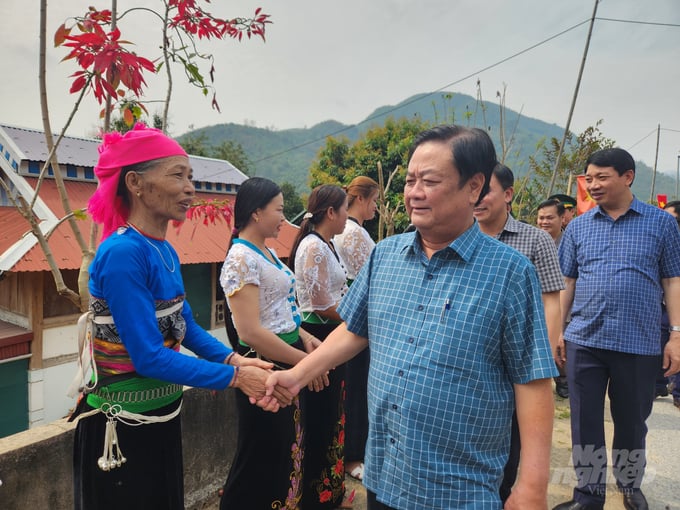
Minister of Agriculture and Rural Development Le Minh Hoan and the delegation visited and worked in Muong Lat district. Photo: Quoc Toan.
However, Thanh Hoa's mountainous terrain and harsh climate are frequently affected by natural disasters and climate change; infrastructure is lacking and weak; agricultural production is fragmented and small, and people's lives are extremely difficult.
In mountainous areas, the average poverty rate is about 30%. Only 61 communes and 645 villages have been recognized as meeting new rural standards in 11 mountainous districts; 7 communes were recognized as newly-advanced rural areas; and 51 villages were recognized as model new rural areas. In hilly terrain, the criteria average is just 15.6 criteria/commune.
According to Le Duc Giang, Vice Chairman of Thanh Hoa Provincial People's Committee, in addition to objective reasons, the construction of new rural areas in many mountainous districts of the province faces many difficulties because the locality is not flexible and lacks light, and the policy is not being implemented aggressively. Some officials and citizens continue to rely on the state's support programs, and their thinking and awareness are reluctant to develop.

Mr. Do Trong Hung, Secretary of Thanh Hoa Provincial Party Committee presents gifts to households in Muong Ly commune. Photo: Quoc Toan.
Some localities stated at the conference that the support capital from the central budget allocated to the National Target Program for building new rural areas is still limited; many mountainous districts are unable to auction land, resulting in difficulties in raising investment capital for new rural construction.
Mr. Cao Van Cuong, Chief of the Office for Coordination of the Program on New Rural Development in Thanh Hoa Province, proposed: "It is recommended that the Government establish a specific mechanism to support communes, villages, and hamlets in Thanh Hoa's mountainous area in the construction of new rural areas associated with poverty reduction." Modify a few parameters (% of families utilizing clean water) so that hilly communes can meet this requirement..."
To implement the national target program on sustainable poverty reduction in the 2021-2025 period in the mountainous districts of Thanh Hoa province, the total development investment capital from the central budget will be allocated to Thanh Hoa province in the 2021-2025 more than 1.6 trillion VND; non-business capital in 2022-2023 is more than 469 billion VND.
Yet, according to Mr. Le Duc Giang, Vice Chairman of Thanh Hoa Province People's Committee: "Today, resources to assist poverty reduction for mountainous areas are still restricted, generating obstacles for poverty reduction. Furthermore, Thanh Hoa The forest area is huge, yet the inhabitants are still poor. For example, when the policy of shutting down the natural forest is implemented, individuals are not permitted to use the fallen trees to enhance their income and better their life. The central government must have procedures and regulations in place to help individuals use the forest's values and become wealthy."
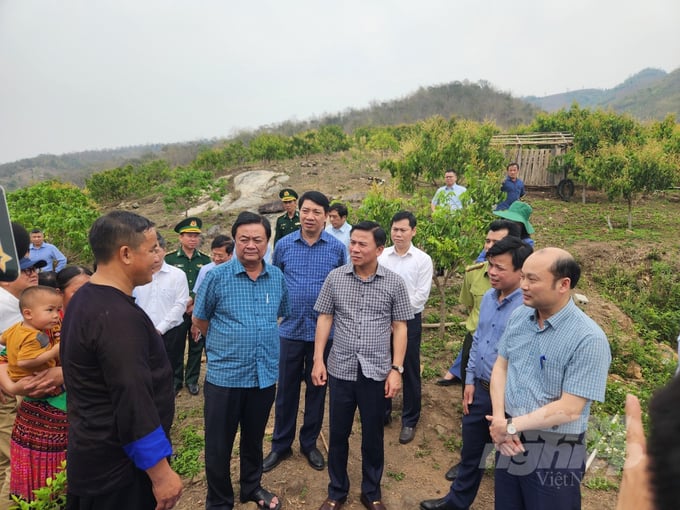
Minister Le Minh Hoan visits the production model of his family, Sung A Thao, in Muong Ly commune. Photo: Quoc Toan.
Ms. Pham Thi Thanh Thuy, Head of the Provincial Party Committee for Mass Mobilization and Chairwoman of Thanh Hoa province's Fatherland Front Committee, stated: "Until now, many production models have contributed positively to hunger eradication and poverty alleviation, improving the economic and spiritual life of farmers in Thanh Hoa's mountainous area."
However, due to a lack of sustainable livestock linkage model formation, replication of production models in mountainous districts faces numerous challenges.
"The problems that the 11 impoverished mountainous areas in Thanh Hoa are obvious," Minister Le Minh Hoan said. It is critical to handle the new feature of mountainous development in a more realistic manner".
The Minister will meet with provincial leaders to discuss ways to fix the situation and eliminate obstacles. To concentrate resources for developing mountainous localities, it is necessary to clarify issues in the allocation of resources of the three programs (new rural construction, poverty reduction, and economic and social development in ethnic minority areas).
In developing a new countryside, the bottlenecks in the new countryside also need to be solved, not ignored. The new countryside represents a new life and a new face. Hence, in the creation of new rural regions, it is vital to promote community values and local traits specific to the region.\s" New rural building makes people's material and spiritual existence enhanced more significant than material amenities. In addition, the leader has to inspire new rural construction so that the whole community can respond to the objective execution. To achieve this, we must work hard, be self-reliant, collaborate and associate to work together and progress," stated Minister Le Minh Hoan.
Translated by Linh Linh
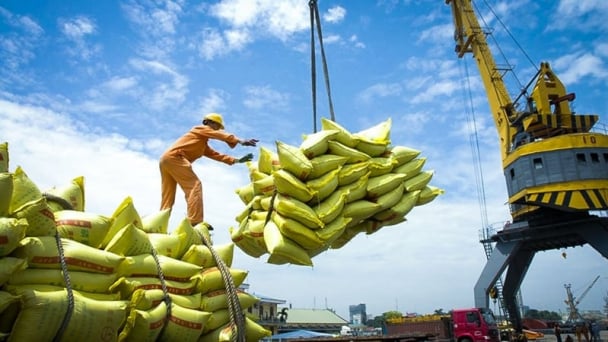
(VAN) The draft amendment to the Circular on rice export trading stipulates a periodic reporting regime for rice exporting enterprises.

(VAN) Dong Thap farmers attained an average profit margin of 64% during the summer-autumn 2024 crop (first season), while An Giang and Kien Giang farmers followed with 56% and 54%, respectively.

(VAN) As a doctoral student doing research on renewable energy and electrification at Harvard University, the author shares his musings on electricity, nature, and countryside memories.
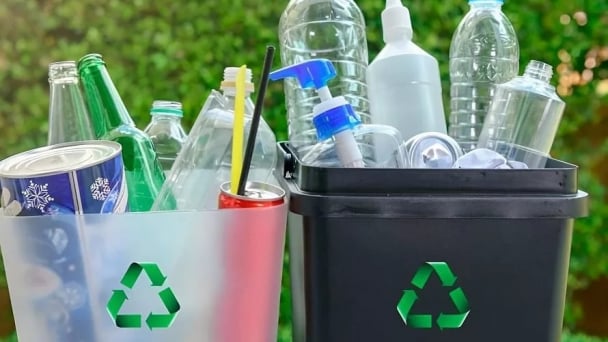
(VAN) The decree on Extended Producer Responsibility (EPR) ensures transparent management and disbursement of support funds, avoiding the creation of a “give-and-take” mechanism.
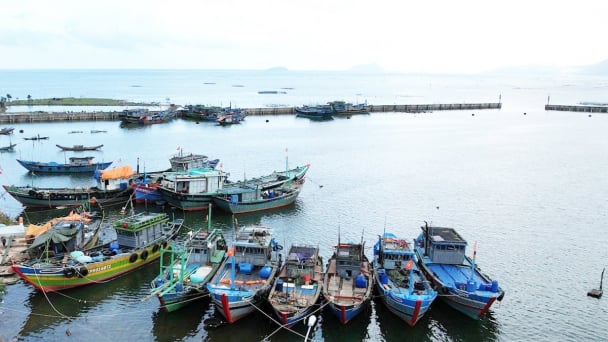
(VAN) Hue City rigorously enforces regulations regarding marine fishing and resource exploitation, with a particular emphasis on the monitoring of fishing vessels to prevent illegal, unreported, and unregulated (IUU) fishing.

(VAN) Hanoi People's Committee has issued a plan on reducing greenhouse gas emissions in the waste management sector with 2030 vision.
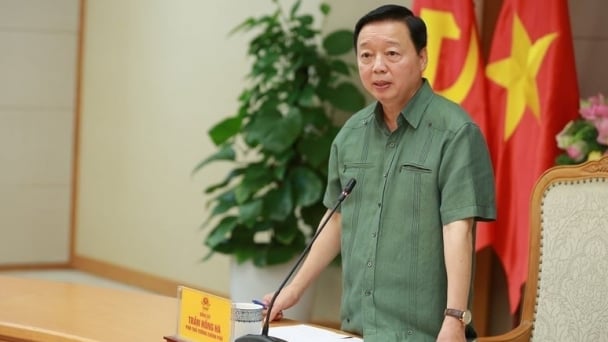
(VAN) Vietnam's draft amendment to Decree No. 156 proposes a mechanism for medicinal herb farming under forest canopies, linking economic development to population retention and the sustainable protection and development of forests.